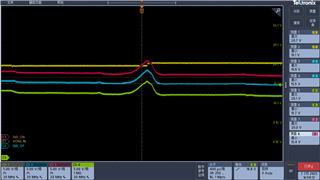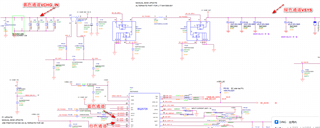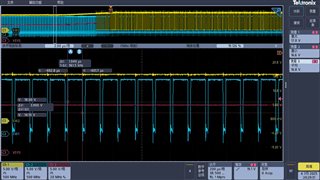Tool/software:
Dear TI Engineer,
During our testing of BQ25720 charging we found that when the load is relatively large, the system voltage suddenly rises to 20V, triggering SYSOVP. The waveform is as below:
(The yellow is the upper MOS of EU1, the blue is the lower MOS of EU1, the red is the upper MOS of EU2, and the green is the system voltage VSYS)
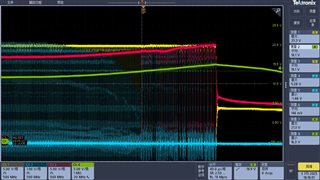
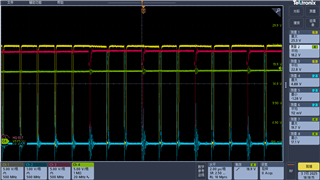
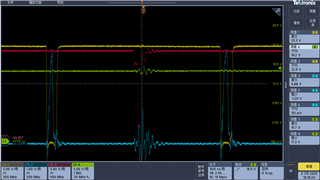
From the first picture, it can be seen that at the beginning, the MOS of EU1 is working normally, the upper MOS of EU2 is conducting, and then the upper MOS of EU2 suddenly shuts down, and the system voltage starts to rise continuously.
At this time, the adapter output voltage is 20V, and the VSYS_min configuration is 12V. The value read from the 0X20 register is 0x8010, whic means the SYSVOP. The schematic is as below:
Can you help analyze the cause of this problem?
Thanks,
Kind Regards



